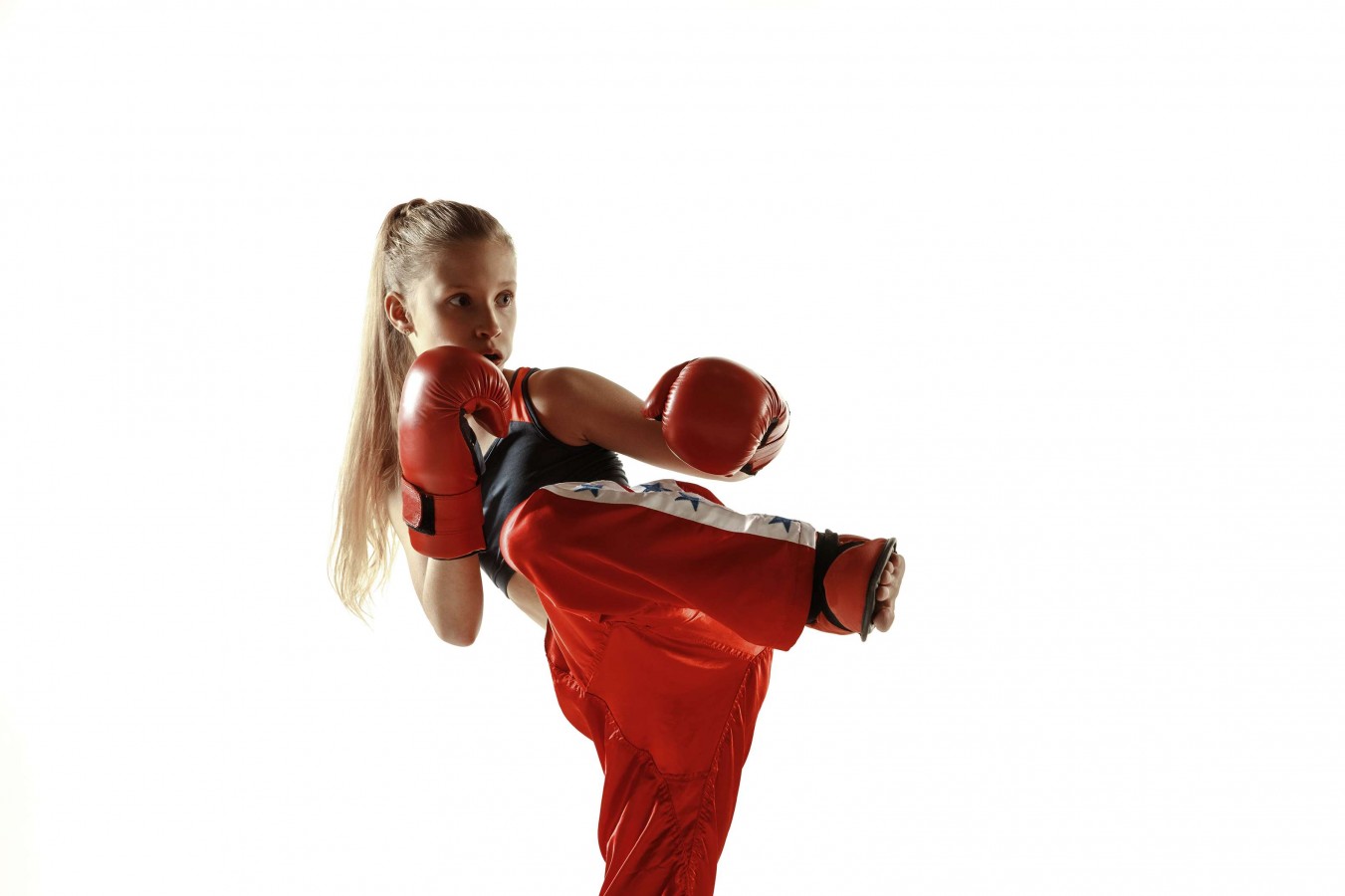What Is Muay Thai? Definition, History, Rules, and More

Muay Thai is also known as Thai boxing. It is a martial art and combat sport that originated in Thailand. It is often referred to as the "Art of Eight Limbs" due to its use of fists, elbows, knees, and shins.
This comprehensive article will delve into the origins, rules, techniques, and health benefits of Muay Thai, providing a comprehensive understanding of this ancient and revered discipline. Let’s check it out!
History of Muay Thai
Muay Thai traces its roots back to the ancient battlefields of Thailand, where warriors developed a fighting style that utilized the entire body as a weapon. Over the centuries, Muay Thai evolved from a military technique to a form of entertainment and eventually a highly respected sport.
The earliest records of Muay Thai date back to the 16th century, during the reign of King Naresuan. It was during this time that Muay Thai gained popularity as a means of hand-to-hand combat among soldiers. Matches were held in front of spectators as a form of entertainment for the royal court.
Throughout its history, Muay Thai has undergone various transformations and adaptations, incorporating elements from other martial arts and combat sports. In the late 19th and early 20th centuries, the sport saw significant changes with the introduction of rules and regulations, as well as the use of gloves and protective gear.
Techniques of Muay Thai
Muay Thai encompasses a wide range of striking techniques using fists, elbows, knees, and shins. These techniques are honed through dedicated training and form the foundation of Muay Thai's formidable combat prowess. Here's a closer look at some of the key techniques:
1. Jab (Mat Sawk)
The jab is a basic but essential punching technique in Muay Thai. It involves a quick, straight punch delivered with the lead hand to set up other strikes or maintain distance from the opponent. The jab can be used to probe the opponent's defenses, disrupt their rhythm, or set up more powerful combinations.
2. Cross (Mat Wiang Klap)
The cross is a powerful punch thrown with the rear hand, usually following a jab. It generates significant force by rotating the hips and shoulders, driving the fist straight towards the target. The cross is commonly used to deliver knockout blows or counter an opponent's attack.
3. Roundhouse Kick (Mat Wiang Yud)
The roundhouse kick is one of the most iconic techniques in Muay Thai. It involves swinging the leg in a circular motion, striking the opponent's body or legs with the shin.
The power of the roundhouse kick comes from the rotational force generated by the hips and the torque of the supporting leg. Proper technique is essential to maximize power and minimize the risk of injury.
4. Elbow Strike (Sok)
Muay Thai is renowned for its devastating elbow strikes, which can cause significant damage to opponents. There are various types of elbow strikes, including horizontal, diagonal, and upward elbows, each with its own application and angle of attack. Elbow strikes are often used in close-quarters combat to inflict cuts, bruises, or knockouts on opponents.
5. Knee Strike (Ti Khao)
Knee strikes are versatile and effective weapons in Muay Thai, utilized both in clinch range and at a distance. The knee is thrust forward or upward to target the opponent's body, head, or legs, delivering significant impact and causing pain or disruption. Knee strikes can be used to control the opponent's movement, create openings for other attacks, or inflict damage in close-quarters exchanges.
Rules and Regulations
Muay Thai matches take place in a ring, similar to boxing, with fighters wearing gloves and traditional shorts. The objective is to defeat your opponent using a combination of striking techniques, including punches, kicks, elbows, and knee strikes.
The rules of Muay Thai vary depending on the governing body and the level of competition, but some common regulations include:
- No strikes below the belt
- No headbutts
- No eye gouging or biting
- Fighters are allowed to engage in clinching, a grappling technique used to control their opponent's movements and deliver strikes at close range.
- Judges award points based on effective striking, defense, and overall control of the fight.
- Competitors engaged in professional matches must be at least 15 years old and fall within the same weight category, with no more than a 5-pound difference in weight.
- Before each Thai Boxing match, participants are required to pay respects in adherence to Muay Thai tradition. This ritual entails a ceremonial dance accompanied by music played on a Javanese tom-tom drum, oboe, and small cymbals.
- Upon completion of the homage, the bout commences, and both fighters must shake hands as a mutual agreement to compete within the stipulated rules and in a sportsmanlike manner.
- Muay Thai matches typically consist of five rounds, each lasting three minutes, with a two-minute rest interval between rounds. Once the match commences, both contenders endeavor to emerge victorious by employing various techniques involving fists, feet, elbows, knees, and shins to overcome their opponent.
- Matches can be won by knockout, technical knockout, or by decision if the fight goes the distance.
Health Benefits of Doing Muay Thai
Engaging in Muay Thai provides a multitude of health benefits across various aspects of well-being, such as:
A. Cardiovascular Health
Muay Thai involves rigorous training sessions that elevate heart rate and promote cardiovascular endurance. Activities such as pad work, bag drills, and sparring improve blood circulation, strengthen the heart muscles, and enhance lung capacity. It all leads to better overall cardiovascular health.
B. Physical Fitness
Muay Thai training encompasses a full-body workout, targeting muscles throughout the body. Techniques like punches, kicks, knees, and elbows engage core muscles, arms, legs, and back, resulting in improved strength, flexibility, and coordination. This comprehensive approach to fitness fosters a leaner, stronger physique and enhances overall physical well-being.
C. Self-Defense Skills
Learning Muay Thai equips individuals with practical self-defense techniques that can be invaluable in real-life situations. By mastering striking, blocking, and evasion techniques, practitioners develop confidence in their ability to protect themselves and others.
D. Stress Reliever
The physical intensity of Muay Thai training serves as an effective outlet for stress and tension. Engaging in pad work, sparring, and drills allows practitioners to release pent-up energy, clear their minds, and focus on the present moment. The endorphins released during exercise also promote feelings of relaxation and well-being, helping to alleviate stress and anxiety.
E. Confidence Boost
Muay Thai training fosters a sense of self-confidence and self-assurance. As you progress in muay thai training and master new techniques, they gain a greater sense of competence and belief in their abilities.
Interested in Trying Muay Thai?
Muay Thai stands as a rich tapestry of tradition, skill, and discipline which offers practitioners a path to physical and mental excellence. If you find your children intrigued by the art of Muay Thai, consider enrolling in a martial arts program at Rockstar Academy.
Renowned for its top-notch instruction and comprehensive curriculum, Rockstar Academy provides a nurturing environment for individuals of all ages to explore their potential.
From their wide array of physical activity programs to the exhilarating RockOlympics, there's no shortage of opportunities for growth and discovery. Plus, with a free trial class available for newcomers, there's no better time to start on your children’s Muay Thai journey. Contact Rockstar Academy today and unlock the transformative power of martial arts!
FAQs
Is Muay Thai suitable for beginners?
Yes, Muay Thai is suitable for practitioners of all skill levels, including beginners. Most gyms offer Muay Thai classes tailored to newcomers, focusing on basic techniques and fitness.
Do I need to be in shape to start Muay Thai?
No, Muay Thai training is designed to help individuals improve their fitness levels over time. Beginners are encouraged to start at their own pace and gradually increase the intensity of their workouts.
Is Muay Thai safe?
While Muay Thai is a contact sport, proper training and safety precautions can minimize the risk of injury. It's essential to train under the guidance of experienced instructors and use protective gear during sparring sessions.
Can children practice Muay Thai?
Yes, children can practice Muay Thai under the guidance of qualified instructors in a safe and controlled environment. Muay Thai training for children typically focuses on teaching fundamental techniques, promoting physical fitness, and instilling values such as discipline, respect, and self-confidence.
Is Muay Thai only for fighting?
While Muay Thai has its roots in combat, many practitioners train for fitness, self-defense, or personal development rather than competitive fighting.



